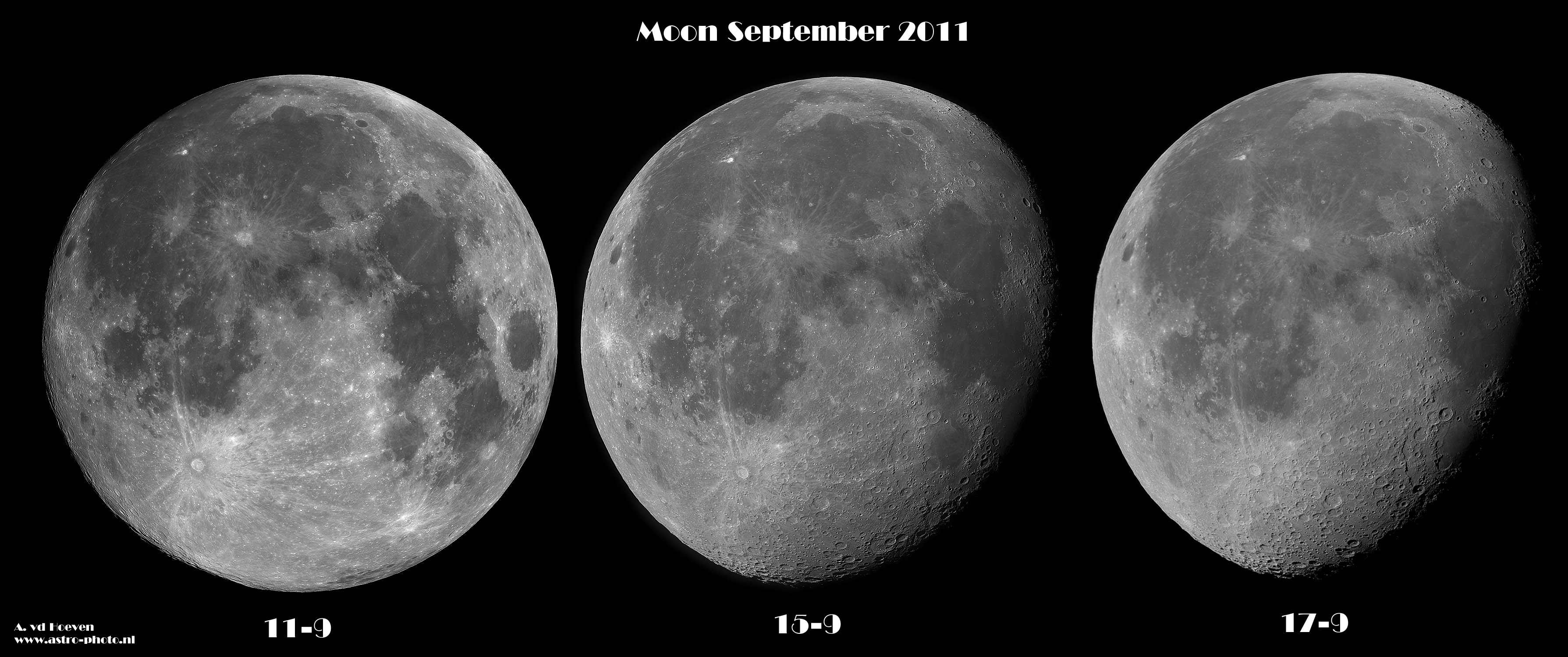September 19, 2011
3x Giant

image by André van der Hoeven, Netherlands
In January 2004, when LPOD started, images were small (about 500 x 400 pixels) because few of us had high speed Internet connections
and we tended to think conservatively. Typically now, LPOD images are 800-900 x 600 pixels, more than twice the earlier area. Today's LPOD
is at the scale André sent it, and I await howls or accolades about its size. I love seeing the full sphere of the Moon (witness this LPOD), and
in looking back through this year, guess that full sphere images appear about twice a month. I tried reducing this to a half or a third of full size
but lost the detail as the terminator moved around the limb and started marching westward. At smaller scales, the mosaic became a symbol of
how the Moon changed over a week, rather than a documentation of the changes. I have, for example, been looking lately at the North Polar
area under high Sun, and the full scale image allows me to identify which craters have rays, whereas the reduced scale view doesn't. Normally
when I create an LPOD I adjust the image to fill the screen on my laptop. I doubt if there will be many LPODs with such large images, but will
when they seem justified. I await your comments and suggestions.
Chuck Wood
PS - We all understand that any negative comments refer to the image size, not image quality!
PPS - Sorry if any of you were spanned from my hacked Yahoo email account. I have changed the password and hope that stops it.
Technical Details
Sept, 2011. ED110 + DMK2; mosaics of 8-12 images, the separate images are 60s each with 30fps. Processing was done in Registax, with
afterwards a deconvolution with Astra image to get the details out.
Related Links
André's website
Yesterday's LPOD: Bulbous Happenings
Tomorrow's LPOD: Sequencing
COMMENTS?
Register, Log in, and join in the comments.



